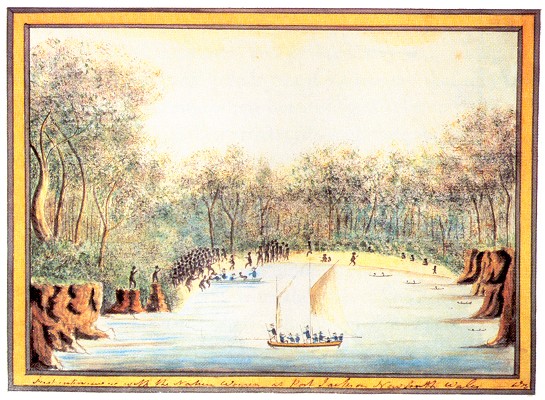 |
surfresearch.com.au
william
bradley : aboriginal canoes, 1788
|
William Bradley : Eora Canoes at Spring Cove, Manly.
[The Kay-ye-my tribe of Manly, Wednesday 30th January 1788]
Extracts from:
William Bradley: The Ladies Kept Their Distance, in
Tim Flannery (editor): The Birth of Sydney
The Text Publishing Company, Melbourne, Victoria, Australia. 1999.
Grove Press, 841 Broadway, New York, NY 10003. 2000, pages 54 to 55.

